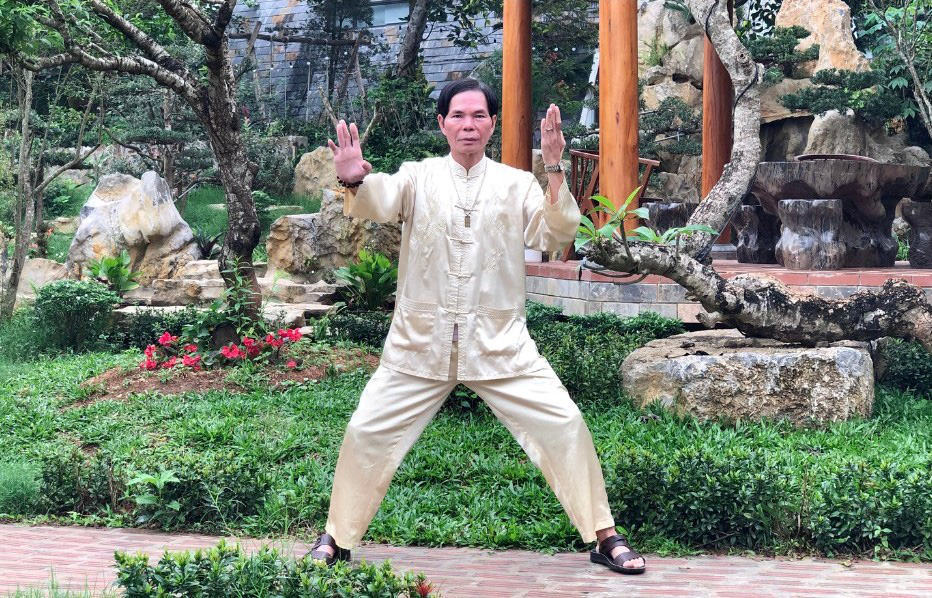
Practicing breathing exercises to purify the body - Photo: HA LINH
Breathing exercises for a healthy body
Doctor Hoang Khanh Toan, former head of the Oriental Medicine Department, 108 Central Military Hospital, said that when it comes to body cleansing, people usually think of choosing and using food and drinks or medicines and functional foods. Few people think that breathing is also one of the useful methods in this matter.
During the process of metabolism, our body produces and releases a lot of carbon dioxide and at the same time needs to absorb a large amount of oxygen.
The more carbon dioxide is released and the more oxygen is taken in, the healthier the body will be, just as the ancient health practitioners said: "Breathing is like a flywheel in a machine, it transmits and controls the vitality in our body."
But the problem is how to breathe to achieve the highest level of body cleansing effect? That means we must know how to breathe, must change the breathing movement which is spontaneous to conscious with the intention of actively controlling. That is the method of practicing Qi cultivation to purify the body of Oriental medicine.
Doctor Nguyen Van Thang, head of the Thang Long Qigong Martial Arts Club, emphasized that the lungs not only have the function of breathing but also circulate fluids and eliminate toxins. Practicing Qigong not only helps the lungs stay healthy but also helps the heart stay healthy, blood circulates well and circulates blood, preventing many diseases.
The lungs originate from the main bronchus, which divides into two branches, right and left, from which they divide into many branches, bronchioles, and gradually spread to the alveoli, which are honeycomb-like sacs (small air-containing sacs).
From there it goes to the nose and diffuses peripherally through the skin. The average capacity of air in the lungs is 2.5 - 3.5 liters. The amount of air circulating through the lungs is 300 - 400 ml/second and about 9,000 liters of air/24 hours.
Each person breathes from 16 - 18 breaths/minute, up to 18 - 24 breaths/minute. The lungs have many functions, but the main function is ventilation, blood circulation, the lungs also help circulate fluid and detoxify.
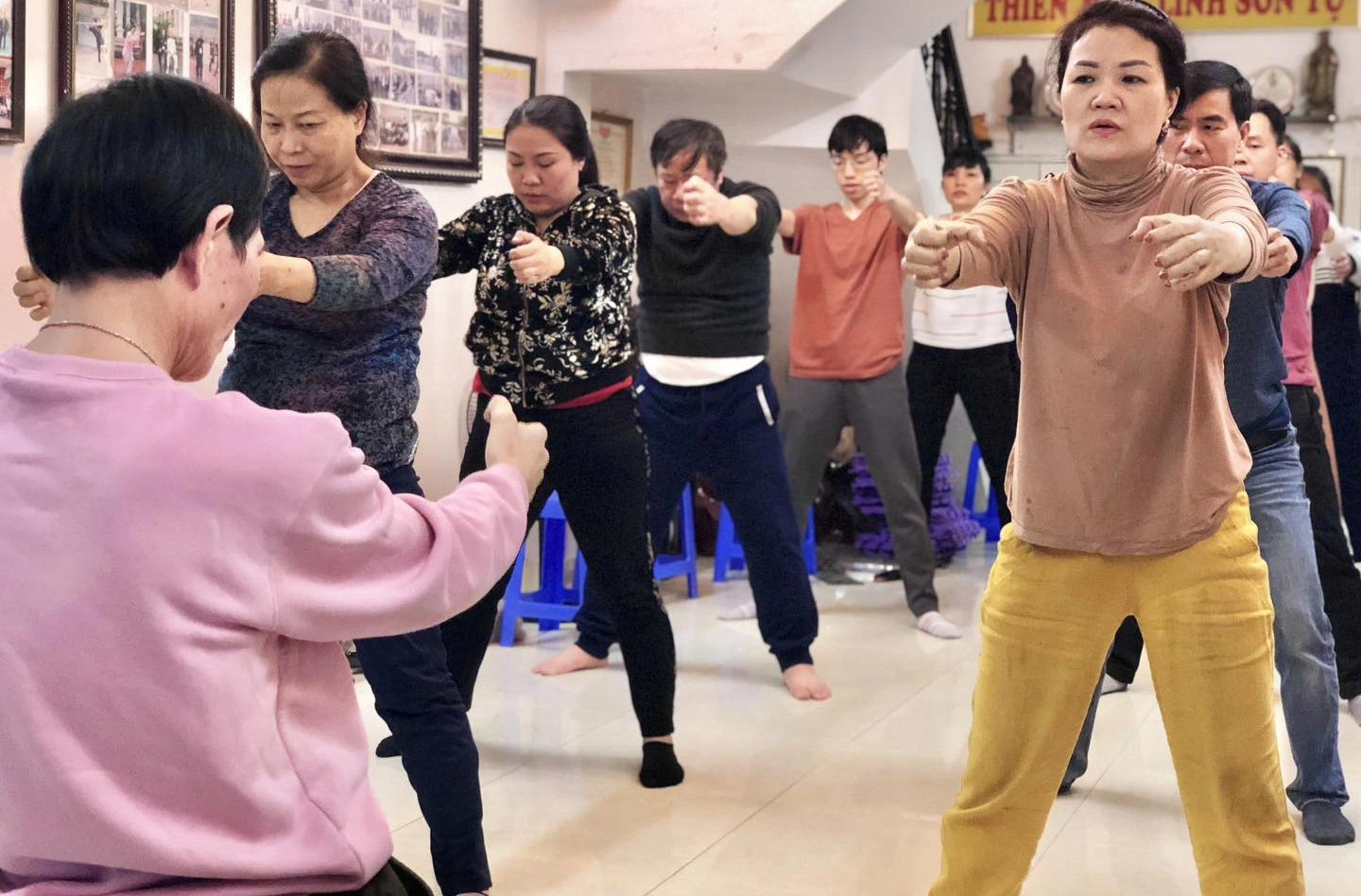
Practicing Qigong improves health - Illustration photo
Top breathing, middle breathing and bottom breathing - which breathing is effective?
Doctor Thang said that to have healthy lungs, you need to practice breathing to have the best breath. When you achieve the best breath, it will make the blood circulate, the meridians clear, the yin and yang balanced, the water and fire interact, making the body's biological rhythm adapt to the highest level of heaven and earth. Through breathing, you will regulate the body.
Practicing to breathe continuously, evenly, gently, mentally calm and repeat the body's biological state will help prevent disease, restore function, improve health and longevity.
Doctor Toan also shared that the basis of all Qi-nourishing exercises is complete breathing. Complete breathing is a synthesis of three breathing methods: upper breathing, middle breathing, and lower breathing.
- Upper breathing , also known as clavicular breathing, is a breathing method in which only the upper part of the chest and lungs are active, so the amount of air passing through the lungs is the lowest.
- Intercostal breathing , also known as intercostal breathing, when breathing in the diaphragm rises, the abdomen contracts, the chest expands, and part of the lungs also expand. Most of us usually breathe this way.
- Lower breathing , also known as diaphragmatic breathing, when exhaling, the diaphragm curves up, the abdomen contracts, and when inhaling, the diaphragm lowers, compressing the abdominal organs downward and pushing the abdomen forward.
Upper breathing fills only the upper part of the lungs with air, middle breathing fills the middle and a small part of the lower lungs with air, and lower breathing fills the entire middle and lower parts of the lungs with air.
Thus, the third breathing method is the best. However, this breathing method does not fill the entire lungs with air. Only in full breathing, breathing that combines all three above mentioned breathing methods, can it bring maximum efficiency in purifying carbon dioxide and supplying oxygen to the body.
Breathing also needs to be complete.
In full breathing, when breathing in, the diaphragm first descends, the abdomen slowly expands forward, and air enters the lower part of the lungs. Then we extend the ribs in the lower and middle part of the chest so that little by little the air penetrates into the middle part of the lungs.
Finally, we expand the chest fully and air enters the upper part of the lungs. In this final stage, we pull in the abdomen to support the lungs and allow the upper lobes of the lungs to fill with air.
Viewed from the side, full breathing is a unified, slow, undulating movement, beginning in the abdomen. Once practiced, one can move from one stage to the next with ease.
When exhaling, we begin to breathe slowly through the nose in the same order as when inhaling: first draw in the abdomen, press the free ribs together, finally lower the shoulders and collarbones, the air in the lower part of the lungs goes out first, then the air in the middle and upper lungs.
In addition, the important thing in the Oriental medicine breathing practice to purify the body is not only to breathe fully but also to breathe rhythmically, taking the heartbeat as the basis for breathing. A deep breath usually consists of two units of inhalation and exhalation.
But a full breath consists of four steps: inhale, hold, exhale, and rest. There are different opinions on the time ratio for each step. Most believe that the time ratio of the steps is 1:4:2:1, which is quite heavy.
For beginners, this ratio should be 1:2:1:1. If breathing in is 6 heartbeats, then hold your breath for 12 heartbeats. And if you practice persistently, breathing in can go up to 12 heartbeats.
It can be seen that practicing breathing exercises is also one of the ways to purify the body, specifically purifying carbon dioxide and other toxic gases produced during endogenous metabolism or those that enter the body from outside.
Not only that, this breathing method also helps the body absorb the maximum amount of essential oxygen that is always available around us for all internal organ activities without spending a single penny compared to buying medicine, functional foods or expensive foods to purify the body.
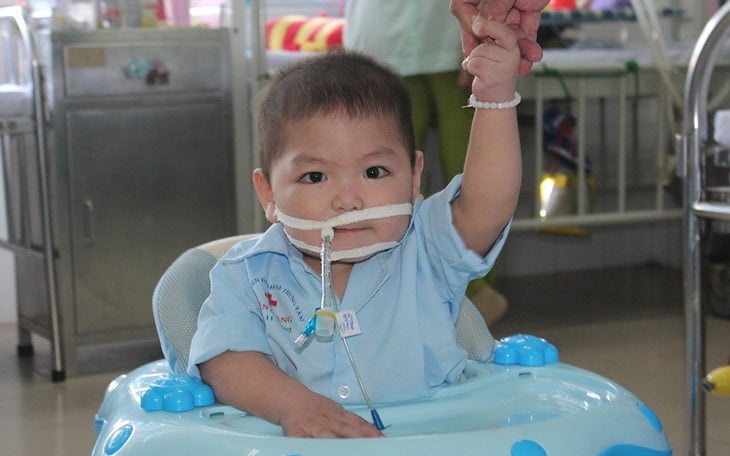 The boy who 'forgot to breathe' and the miracle of love
The boy who 'forgot to breathe' and the miracle of loveSource


![[Photo] President Luong Cuong receives US Secretary of War Pete Hegseth](https://vphoto.vietnam.vn/thumb/1200x675/vietnam/resource/IMAGE/2025/11/02/1762089839868_ndo_br_1-jpg.webp)

![[Photo] Lam Dong: Images of damage after a suspected lake burst in Tuy Phong](https://vphoto.vietnam.vn/thumb/1200x675/vietnam/resource/IMAGE/2025/11/02/1762078736805_8e7f5424f473782d2162-5118-jpg.webp)

















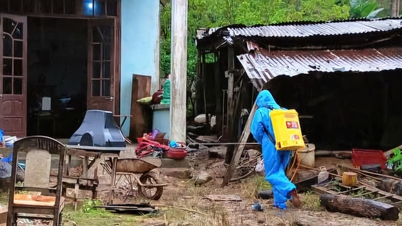
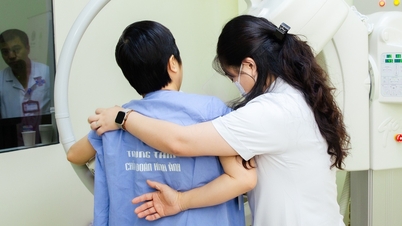
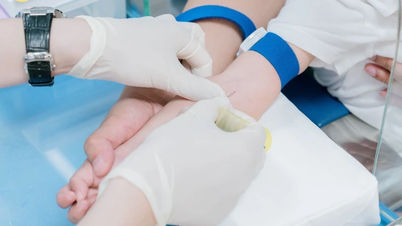

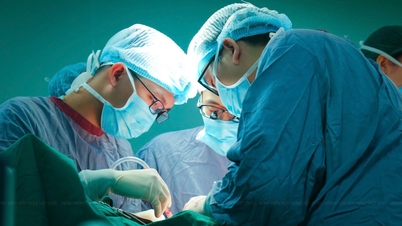











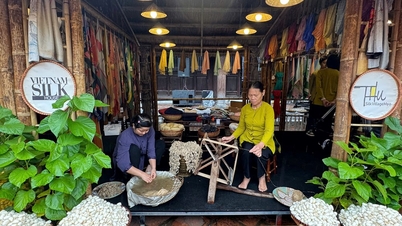










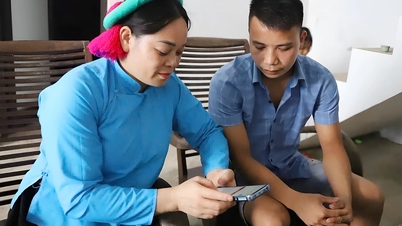






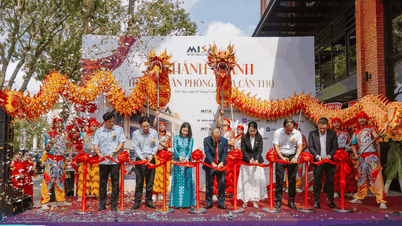




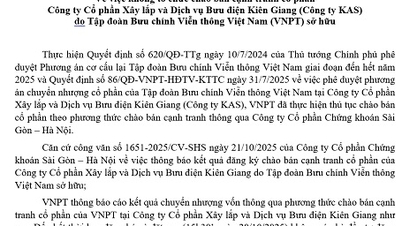







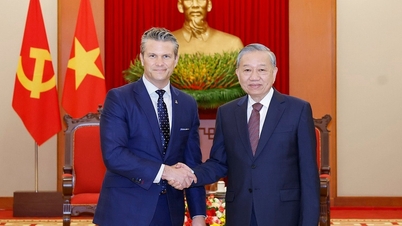

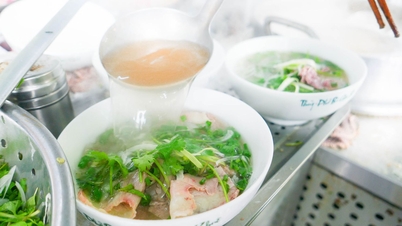

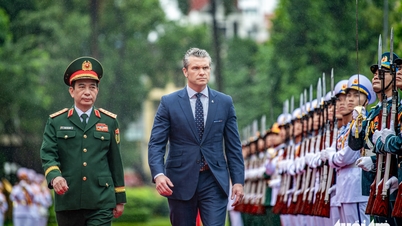
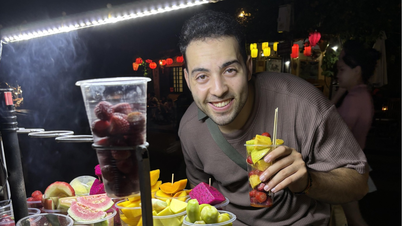







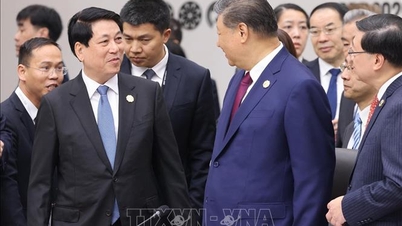

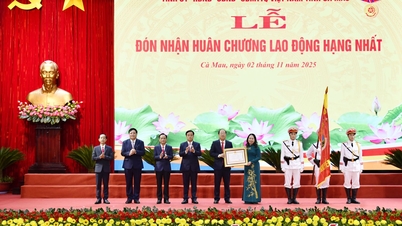








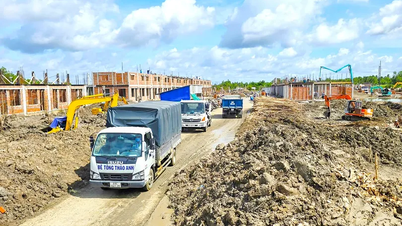
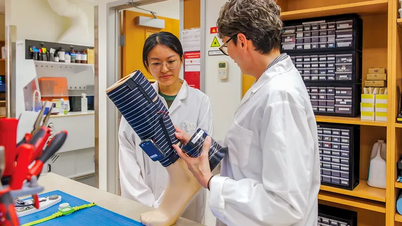


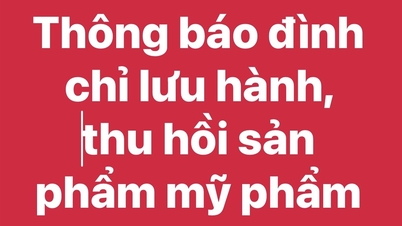








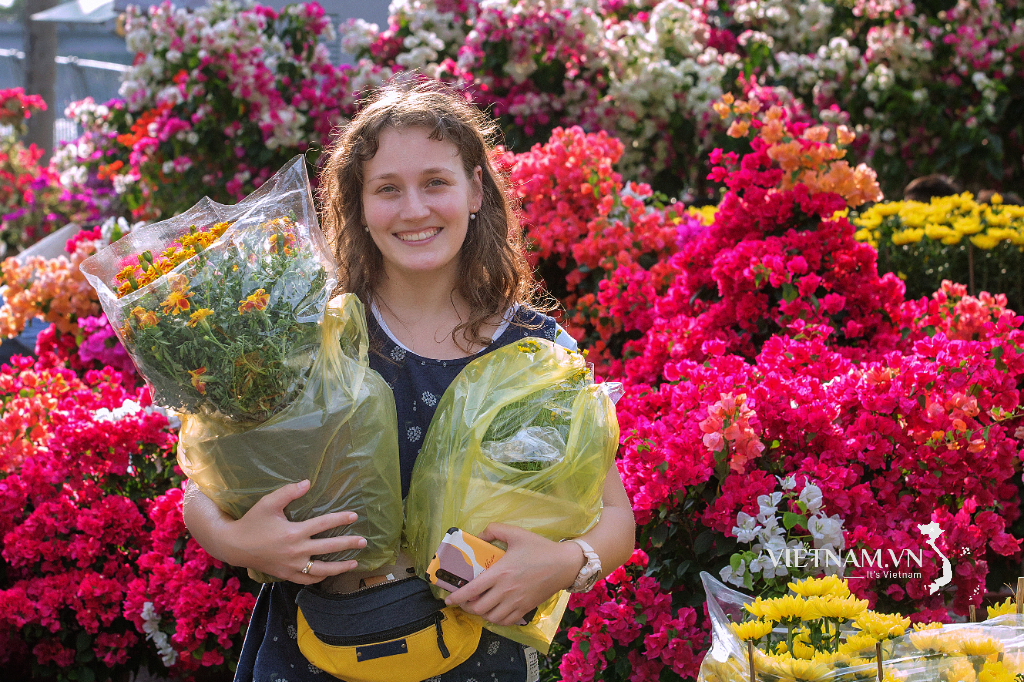



Comment (0)